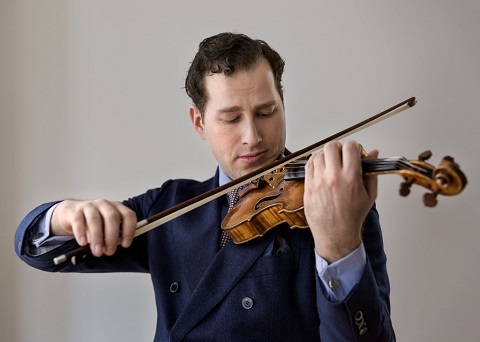 United Kingdom Mussorgsky, Szymanowski, and Tchaikovsky: Nikolaj Szeps-Znaider (violin), London Symphony Orchestra / Philippe Jordan (conductor). Barbican Hall, London, 25.10.2018. (MB)
United Kingdom Mussorgsky, Szymanowski, and Tchaikovsky: Nikolaj Szeps-Znaider (violin), London Symphony Orchestra / Philippe Jordan (conductor). Barbican Hall, London, 25.10.2018. (MB)

Mussorgsky – Night on the Bare Mountain
Szymanowski – Violin Concerto No.2 Op.61
Tchaikovsky – Symphony No.5 in E minor Op.64
I was about to say that the LSO excels in music such as this, but then it tends to excel in pretty much any kind of music, especially given the right conductor. Nevertheless, its trademark precision was vividly on display in a duly wild – controlled wild – performance of Night on the Bare Mountain. It was fantastical too, Mussorgsky’s obstreperous lack of development in a Germanic sense largely vindicated; there are other ways for music to unfold in time. (Yes, I know what that says about my sense of musical gravity, about my construction of a centre and periphery; so be it.) There was ‘Russian’ soul too, especially from the lower strings. Philippe Jordan seemed to relish, as well he should, this Rolls-Royce of an instrument with which to play. Does it all quite hang together, or did it on this occasion? I am genuinely not sure. It was fun, though.
The sound Jordan and/or Szymanowski conjured from the orchestra for the latter’s Second Violin Concerto was no less fantastical, but cooler, darker, less opulent: definitely a later Szymanowski than that of the First – and indeed of much of his most popular music. Its hard edges glistened, whilst Nikolaj Szeps-Znaider – he has reverted to the fuller version of his surname – spun a more typical, yet no less alluring golden thread. At least that was the early balance of play; one of the fascinations of this fine performance was the constant shift in such relationships, even in standpoints and perspectives. A different, later mode of definition endured: when those great washes of sound came, they were more golden than kaleidoscopic, more damask than magic carpet. This was a dramatic world born in the Tatra Mountains rather than Sicily. Earthy mazurka rhythms, spellbinding solo virtuosity, a languor closer perhaps to Lulu than to Pelléas, definitely of a world following King Roger: these were not mere incidental points of interest but crucial to the revelation of musical structure in time. It is a structure, a work sui generis and sounded as such. Szeps-Znaider’s Bach D minor Sarabande encore proved impressively variegated, even febrile: here was something still more vulnerable, with a little of the viola or even the cello to its musical soul.
Tchaikovsky’s Fifth Symphony opened with a tone more rounded than that we had heard in Mussorgsky. That is, of course, partly a matter of writing, but also of performance. Superlative clarinet duo playing from Chris Richards and Chi-Yu Mo would not be the least of the LSO delights on offer here and throughout. Many thanks should also go to the telephone improvisation at the close of the first movement introduction. Jordan imparted a sense of urgency, of fate, to the exposition proper, the LSO cultivated and incisive. Soon, however, that drive tilted into the merely hard-driven, not helped by the congested Barbican acoustic. (How desperately we need a new hall!) If only his structural grasp or communication had been so unfailingly excellent as the orchestral playing. It was certainly not without merit, notably eliciting a fine sense of return at the onset of the recapitulation and true defiance in the closing bars. Nevertheless, the music found itself on several occasions driven or held back without evident reason: this in a Tchaikovsky symphony more in need than any other of a Brahmsian mind.
The slow movement’s horn solo (Guglielmo Pellarin) proved delectable, yet was ‘only’ first among wind equals. Save for a few passages of excessive moulding, Jordan shaped Tchaikovsky’s music well here. Had he let it sing more freely, it would have proved more moving still. The waltz was graceful, finely detailed, if not especially warm, although again the Barbican surely had a hand in that. There was no denying, however, the richness of the LSO string sound at the finale’s outset. Very much on the fast side, it nevertheless worked in a straightforward fashion. A little more relaxation might not have gone amiss, but this was perhaps the strongest of the four movements. If its virtues could have been read back into its predecessors, the first movement in particular, it would surely have been to the benefit of the whole.
Mark Berry